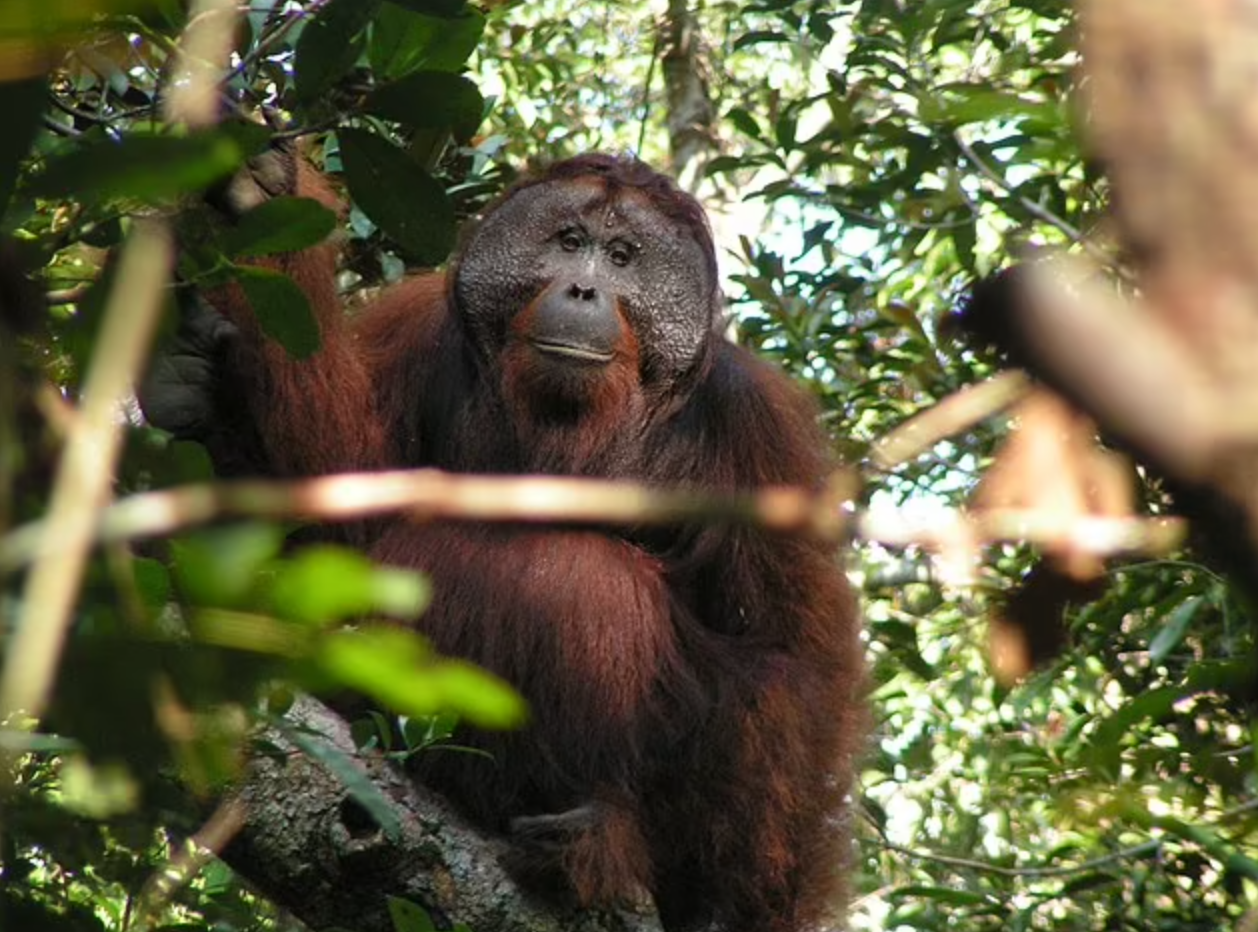Researchers use AI to decode and understand orangutan communication
Researchers revealed the vocal complexity of orangutans when communicating over long distances.

Wendy Erb, a tropical field and behavioral ecologist from Cornell University, has dedicated countless hours to studying male Bornean orangutans (Pongo pygmaeus wurmbii) in Borneo's tropical peatland forests.
Her research focuses on understanding their communication methods, which has led to some exciting and occasionally hazardous encounters. Male orangutans, known for their incredible strength, often uproot trees to display their power, posing a significant risk to nearby scientists.
"I often wonder which of these snag crashes are directed at neighboring orangutans and which of them might be a message for us to give these guys some space!" Erb remarked.
Orangutans have remarkable strength, and large males enjoy finding dead trees to shake, push, or pull until they fall with an impressive crash. This behavior forces researchers to remain vigilant while these giants move through the canopy, as falling trees can be dangerous for those on the ground. Erb noted, "Orangutan researchers need to stay quite vigilant while these giants move through the canopy, as these falling trees can present a real hazard to us mortal bipeds."
Despite not fully understanding the "language" of orangutans, Erb and her colleagues have made significant progress. In a recent study published in the journal PeerJ Life & Environment, they revealed the vocal complexity of orangutans when communicating over long distances.
Investigating Orangutan Long Calls
The researchers aimed to determine the number of different sound types in orangutan long calls, how they can be distinguished, and the extent to which they are graded. They observed 13 male orangutans, ensuring minimal disturbance to their natural behavior.
Using audio analytic techniques, including machine learning, they discovered that orangutan long calls include only two to four loosely differentiated sound types. Within these types, orangutans produce a diverse spectrum of intermediate sounds, allowing for various sequences within a single vocalization.
Related Stories
This study demonstrates that orangutans have sophisticated communication abilities, comparable to other primates like chimpanzees. However, Erb acknowledges that this research only scratches the surface of understanding orangutan communication.
"While vocal complexity is an important concept in animal communication – thought to be shaped by animals’ social and physical environments – we are lacking a unifying framework for quantifying complexity," Erb explained.
Erb continued, "For species like orangutans, whose sounds fall along a ‘graded’ continuum, we don’t yet know how to interpret the apparently low number of ‘discrete’ sounds; however, we are fairly confident there is much complexity still to unpack in this great ape’s vocal system."
Implications for Understanding Human Speech
Studying orangutan vocalizations could provide insights into how humans developed the ability to speak. Every species develops vocal complexity due to evolutionary influences such as sexual selection, habitat details, social structures, and predator pressures. For example, black-capped chickadee (Poecile atricapillus) groups increase the diversity of note types in larger groups to convey more potential messages.
Humans can create far more elaborate sounds than any other primate species, but understanding the evolution of these abilities requires studying how more primitive primates, like orangutans, use graded vocalizations to convey meaning.
Erb emphasizes the need for a comparative framework to quantify and compare vocal complexity within and across species with graded repertoires. "We still have a lot of work ahead to unpack this complexity and its significance in the evolution of animal communication systems," she said.
The Future of Primate Communication Research
The dream of casually conversing with orangutans, chimpanzees, and other primates may be far in the future, but it could significantly benefit future researchers. For now, Erb and her colleagues continue to navigate the challenges of working with these powerful animals.
"In the dark, it's much harder to assess which way the tree is going to fall, so we were quite lucky to have made it through these heart-pounding wake-up calls unscathed," Erb recalled. "I often wonder which of these snag crashes are directed at neighboring orangutans and which of them might be a message for us to give these guys some space!"
As orangutans face the threat of extinction, understanding their communication could be crucial for their conservation. Erb's work highlights the importance of continued research in this area, not only for the safety of researchers but also for the broader implications in understanding the evolution of communication in primates.
By unlocking the secrets of orangutan vocalizations, scientists can gain a deeper understanding of the evolutionary processes that led to human speech. This knowledge could ultimately contribute to the preservation of these incredible animals and ensure their survival for future generations to study and appreciate.
For more science news stories check out our New Discoveries section at The Brighter Side of News.
Note: Materials provided above by The Brighter Side of News. Content may be edited for style and length.
Like these kind of feel good stories? Get the Brighter Side of News' newsletter.
Joshua Shavit
Science & Technology Writer | AI and Robotics Reporter
Joshua Shavit is a Los Angeles-based science and technology writer with a passion for exploring the breakthroughs shaping the future. As a contributor to The Brighter Side of News, he focuses on positive and transformative advancements in AI, technology, physics, engineering, robotics and space science. Joshua is currently working towards a Bachelor of Science in Business Administration at the University of California, Berkeley. He combines his academic background with a talent for storytelling, making complex scientific discoveries engaging and accessible. His work highlights the innovators behind the ideas, bringing readers closer to the people driving progress.



